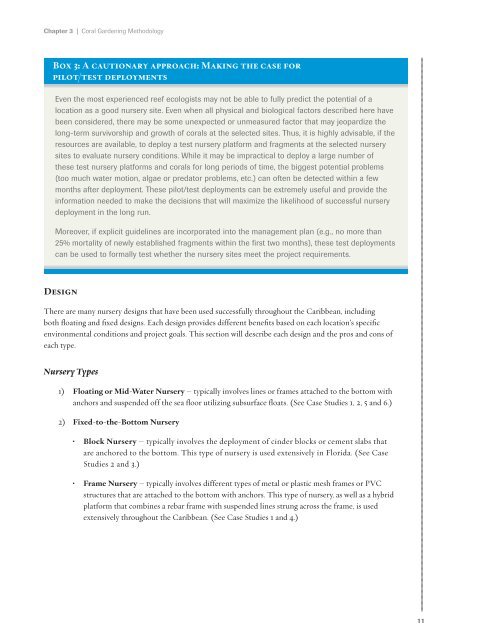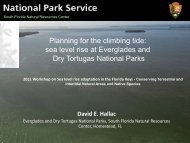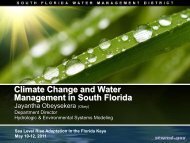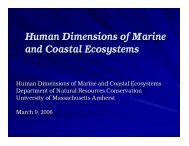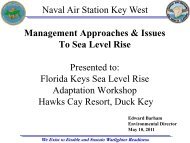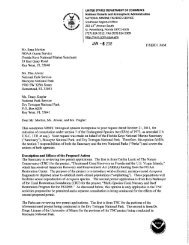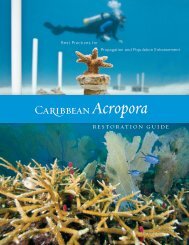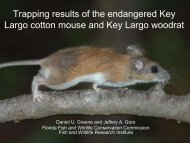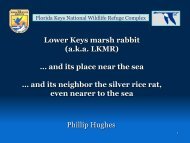Caribbean Acropora Restoration Guide - The Florida Reef ...
Caribbean Acropora Restoration Guide - The Florida Reef ...
Caribbean Acropora Restoration Guide - The Florida Reef ...
You also want an ePaper? Increase the reach of your titles
YUMPU automatically turns print PDFs into web optimized ePapers that Google loves.
Chapter 3 | Coral Gardening Methodology<br />
Box 3: A cautionary approach: Making the case for<br />
pilot/test deployments<br />
Even the most experienced reef ecologists may not be able to fully predict the potential of a<br />
location as a good nursery site. Even when all physical and biological factors described here have<br />
been considered, there may be some unexpected or unmeasured factor that may jeopardize the<br />
long-term survivorship and growth of corals at the selected sites. Thus, it is highly advisable, if the<br />
resources are available, to deploy a test nursery platform and fragments at the selected nursery<br />
sites to evaluate nursery conditions. While it may be impractical to deploy a large number of<br />
these test nursery platforms and corals for long periods of time, the biggest potential problems<br />
(too much water motion, algae or predator problems, etc.) can often be detected within a few<br />
months after deployment. <strong>The</strong>se pilot/test deployments can be extremely useful and provide the<br />
information needed to make the decisions that will maximize the likelihood of successful nursery<br />
deployment in the long run.<br />
Moreover, if explicit guidelines are incorporated into the management plan (e.g., no more than<br />
25% mortality of newly established fragments within the first two months), these test deployments<br />
can be used to formally test whether the nursery sites meet the project requirements.<br />
Design<br />
<strong>The</strong>re are many nursery designs that have been used successfully throughout the <strong>Caribbean</strong>, including<br />
both floating and fixed designs. Each design provides different benefits based on each location’s specific<br />
environmental conditions and project goals. This section will describe each design and the pros and cons of<br />
each type.<br />
Nursery Types<br />
1) Floating or Mid-Water Nursery – typically involves lines or frames attached to the bottom with<br />
anchors and suspended off the sea floor utilizing subsurface floats. (See Case Studies 1, 2, 5 and 6.)<br />
2) Fixed-to-the-Bottom Nursery<br />
• Block Nursery – typically involves the deployment of cinder blocks or cement slabs that<br />
are anchored to the bottom. This type of nursery is used extensively in <strong>Florida</strong>. (See Case<br />
Studies 2 and 3.)<br />
• Frame Nursery – typically involves different types of metal or plastic mesh frames or PVC<br />
structures that are attached to the bottom with anchors. This type of nursery, as well as a hybrid<br />
platform that combines a rebar frame with suspended lines strung across the frame, is used<br />
extensively throughout the <strong>Caribbean</strong>. (See Case Studies 1 and 4.)<br />
11


